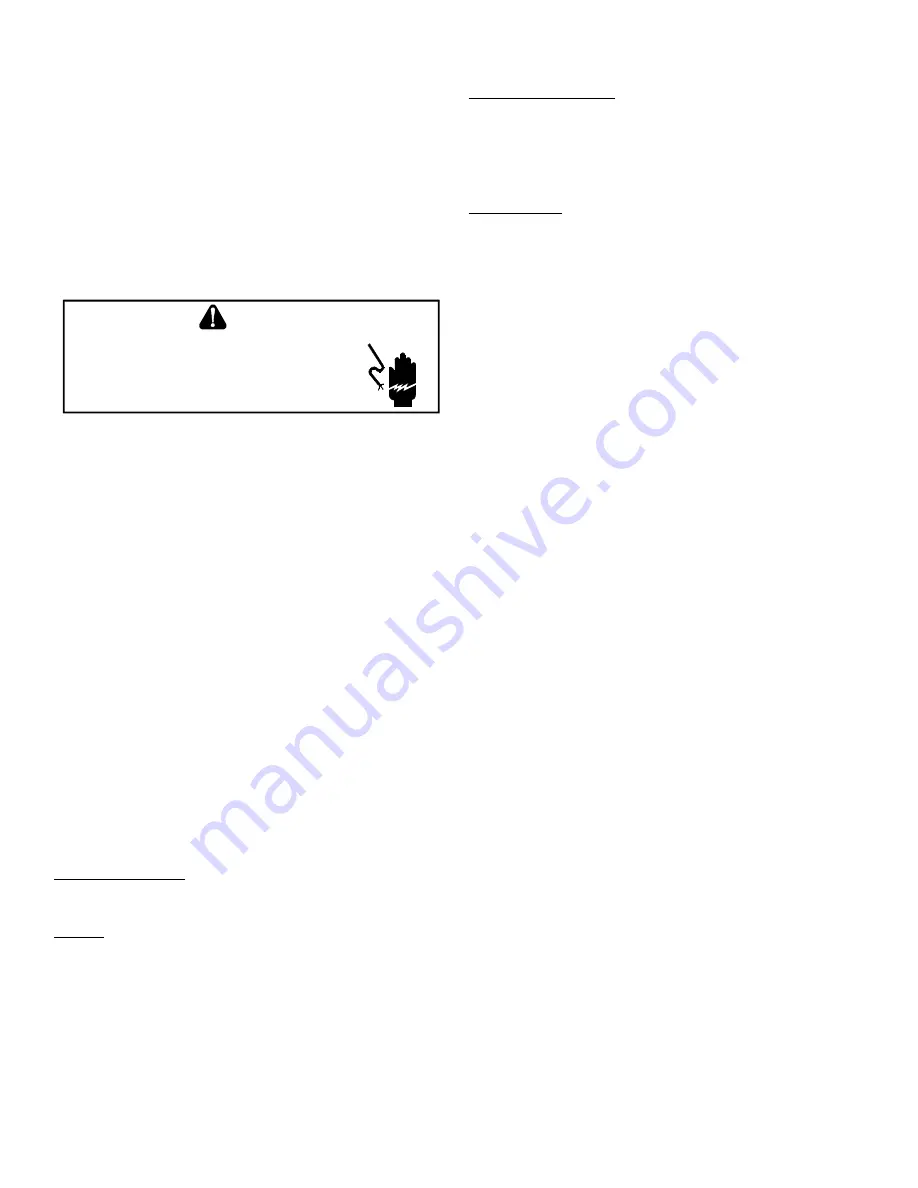
TROUBLESHOOTING
79
TROUBLESHOOTING
ELECTROSTATIC DISCHARGE (ESD) PRECAUTIONS
FOUR WIRE MOTOR TROUBLESHOOTING
Any manual testing of the 4 wire serial communicating motor
should only be done with the ULTRACHECK-EZ diagnostic
tool (part # UTT-01). All other methods may not be reliable
or cause damage to the 4 wire motor. See section S-16C
for additional details.
DIAGNOSTIC CHART
HIGH VOLTAGE !
T
O
AVOID
PERSONAL
INJURY
OR
DEATH
DUE
TO
ELECTRICAL
SHOCK
,
DISCONNECT
ELECTRICAL
POWER
BEFORE
PERFORMING
ANY
SERVICE
OR
MAINTENANCE
.
WARNING
The 3X 7-segment LED display will display an error code that
may contain a letter and number. The error code may be used
to assist in troubleshooting the unit.
RESETTING FROM LOCKOUT
Furnace lockout results when a furnace is unable to achieve
ignition after three attempts during a single call for heat. It is
characterized by a non-functioning furnace and a
O
c
ode
displayed on the dual 7-segment display. If the furnace is in
“lockout”, it will (or can be) reset in any of the following ways.
1. Automatic reset. The integrated control module will
automatically reset itself and attempt to resume normal
operations following a one hour lockout period.
2. Manual power interruption. Interrupt 115 volt power to
the furnace.
3. Manual thermostat cycle. Lower the thermostat so that
there is no longer a call for heat for 1 -20 seconds then
reset to previous setting.
NOTE:
If the condition which originally caused the lockout
still exists, the control will return to lockout. Refer to the
Diagnostic Chart
for aid in determining the cause.
Combustion Quality
Combustion quality can be affected by several factors. Major
factors are venting and draining.
Venting
The venting system should be planned and installed with the
following in mind;
•
Should not be longer than necessary
•
Use 45°elbows rather than 90° elbows when possible
•
Must not sag or otherwise trap condensate
•
Use longest radius fittings possible
•
If using 3" venting, make the transition from 2" to 3" as
close as practically possible
•
Make sure there is no flue gas recirculation into the
combustion air pipe
Condensate Drainage
Furnace combustion can be affected if a furnace is holding
condensate. Check for proper connections of drain hoses,
make sure furnace condensate trap is clean. Make sure
furnace is not improperly sloped. Make sure air conditioning
coil drain is not interfering with furnace drain.
Other Causes
1. Manifold Gas Pressure must be set for the gas being used,
Natural or L.P., high and low firing rates. If converted to
L.P. gas, check size of all orifices
2. Remove Draft Inducer, Check the integrity of the gasket
between the inducer and the collector box cover, any
air leak here will have a negative effect on combustion.
Check the orifice hole in the collector box, it must be free
of burrs on both sides
3. Make sure burners are clean, not out of position and line
up correctly with exchanger tubes, including the heat
exchanger orifice plate between the burners and the
heat exchanger tubes, make sure it is not loose, missing
a screw or hanging down between the burners and heat
exchangers causing flame impingement.
4. Make sure the field installed gas line is not binding and
causing distortion of burner assembly
5. If the furnace is installed as a one pipe system; make
sure the surrounding area and structure are adequate
to provide combustion air
6. Make sure there are no cabinet air leaks allowing sup
-
ply air to affect combustion
7. If heat exchanger integrity is uncertain, follow proce
-
dures in Service Bulletin SF-041





























